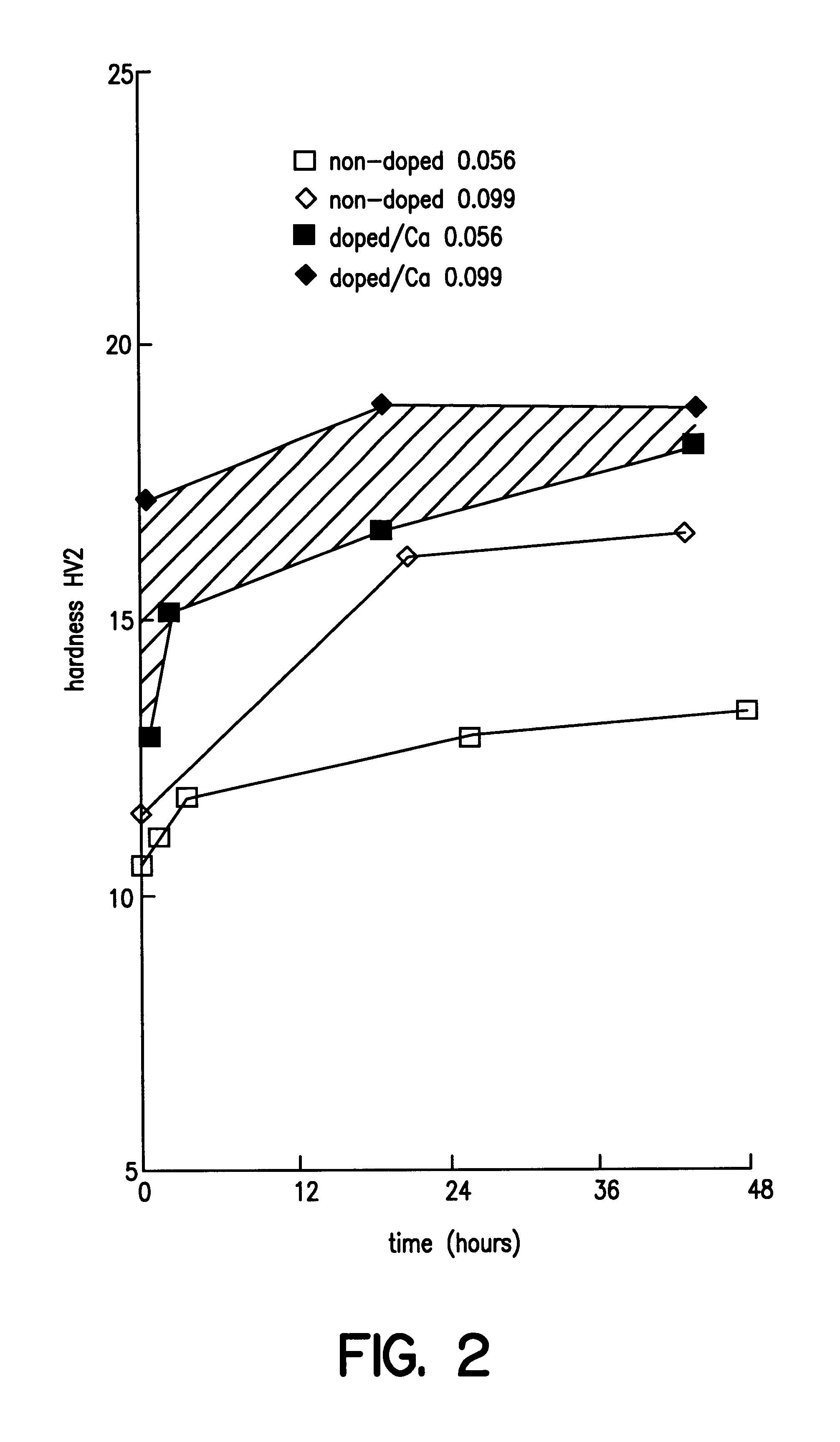Lead-calcium alloys, particularly for battery grids
- Summary
- Abstract
- Description
- Claims
- Application Information
AI Technical Summary
Benefits of technology
Problems solved by technology
Method used
Image
Examples
Embodiment Construction
Alloys of the PbCaAl and PbCaSnAl family, optionally doped with barium, are prepared. The Vickers hardness of these alloys is measured as a function of the barium concentration. Finally, these hardness measurements are compared in the case of a family of alloys according to the barium concentration.
The alloys are produced in the following manner:
Commercial second-melting alloys are used as the base alloy. The relative composition by weight of these alloys is given in Tables I and II. So-called soft (first-melting) lead is added. Its composition is given in Table III. Also added are 19% Sn / Pb, 0.4% Ba / Pb and 0.14% Ca / 0.13% Ba / Pb master alloys, depending on the case.
In all the tables, the compositions are expressed in relative percentages by weight.
All these components are mixed at a temperature of between 550 and 600.degree. C. in air until casting.
The alloys are cast in the form of 130 mm.times.70 mm.times.3 mm plates in a copper mold, the initial temperature of which is room temper...
PUM
| Property | Measurement | Unit |
|---|---|---|
| Fraction | aaaaa | aaaaa |
| Fraction | aaaaa | aaaaa |
| Fraction | aaaaa | aaaaa |
Abstract
Description
Claims
Application Information
 Login to View More
Login to View More - R&D
- Intellectual Property
- Life Sciences
- Materials
- Tech Scout
- Unparalleled Data Quality
- Higher Quality Content
- 60% Fewer Hallucinations
Browse by: Latest US Patents, China's latest patents, Technical Efficacy Thesaurus, Application Domain, Technology Topic, Popular Technical Reports.
© 2025 PatSnap. All rights reserved.Legal|Privacy policy|Modern Slavery Act Transparency Statement|Sitemap|About US| Contact US: help@patsnap.com



